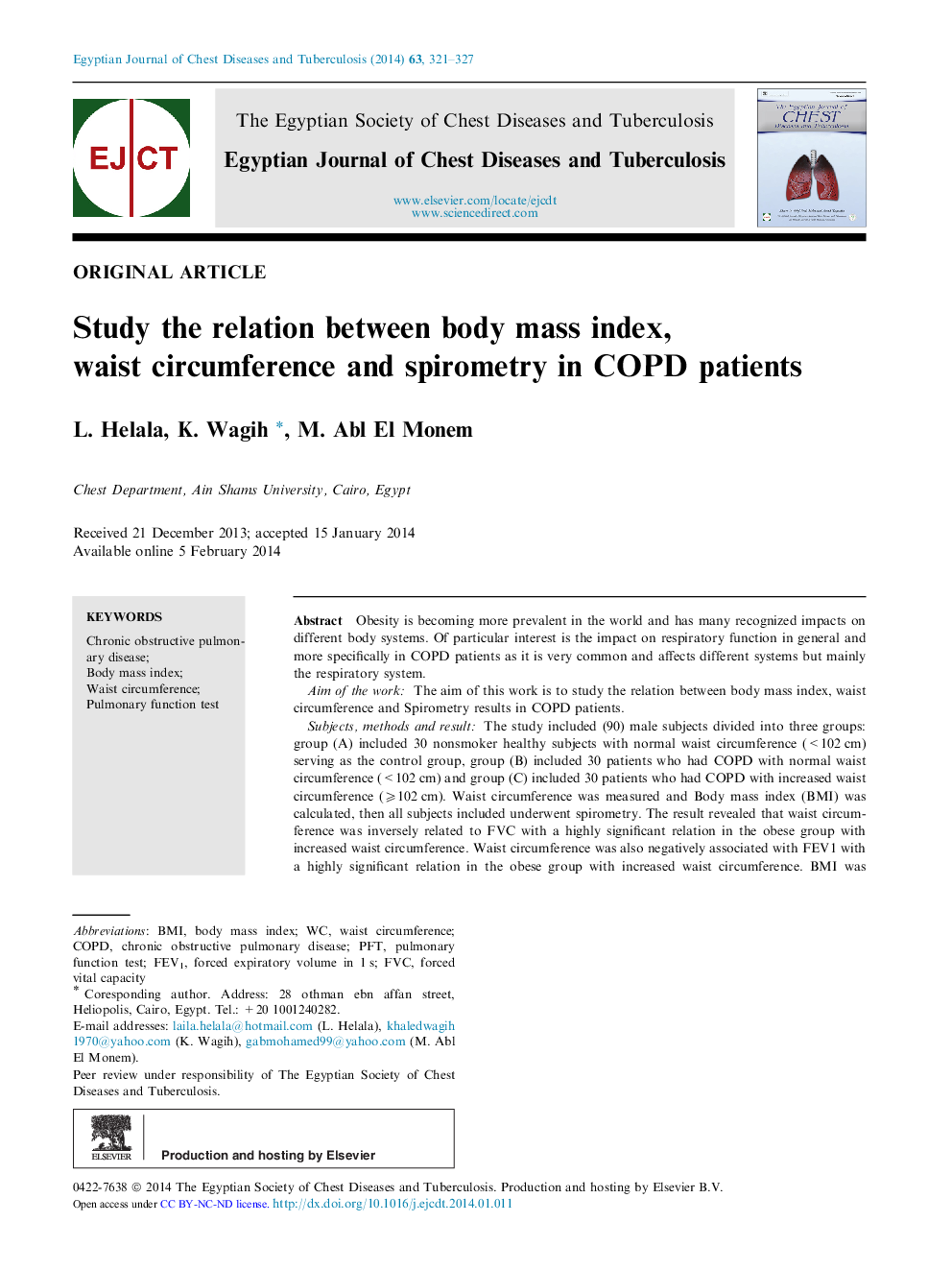| کد مقاله | کد نشریه | سال انتشار | مقاله انگلیسی | نسخه تمام متن |
|---|---|---|---|---|
| 3400341 | 1593068 | 2014 | 7 صفحه PDF | دانلود رایگان |

Obesity is becoming more prevalent in the world and has many recognized impacts on different body systems. Of particular interest is the impact on respiratory function in general and more specifically in COPD patients as it is very common and affects different systems but mainly the respiratory system.Aim of the workThe aim of this work is to study the relation between body mass index, waist circumference and Spirometry results in COPD patients.Subjects, methods and resultThe study included (90) male subjects divided into three groups: group (A) included 30 nonsmoker healthy subjects with normal waist circumference (<102 cm) serving as the control group, group (B) included 30 patients who had COPD with normal waist circumference (<102 cm) and group (C) included 30 patients who had COPD with increased waist circumference (⩾102 cm). Waist circumference was measured and Body mass index (BMI) was calculated, then all subjects included underwent spirometry. The result revealed that waist circumference was inversely related to FVC with a highly significant relation in the obese group with increased waist circumference. Waist circumference was also negatively associated with FEV1 with a highly significant relation in the obese group with increased waist circumference. BMI was inversely related to FVC among subjects of COPD groups (group B and C) with a very highly significant relation in group (C). BMI was negatively associated with FEV1 among subjects of COPD groups (group B and C) with a very highly significant relation in group (C).ConclusionThere is a consistent association between waist circumference, BMI and pulmonary function in COPD patients.
Journal: Egyptian Journal of Chest Diseases and Tuberculosis - Volume 63, Issue 2, April 2014, Pages 321–327